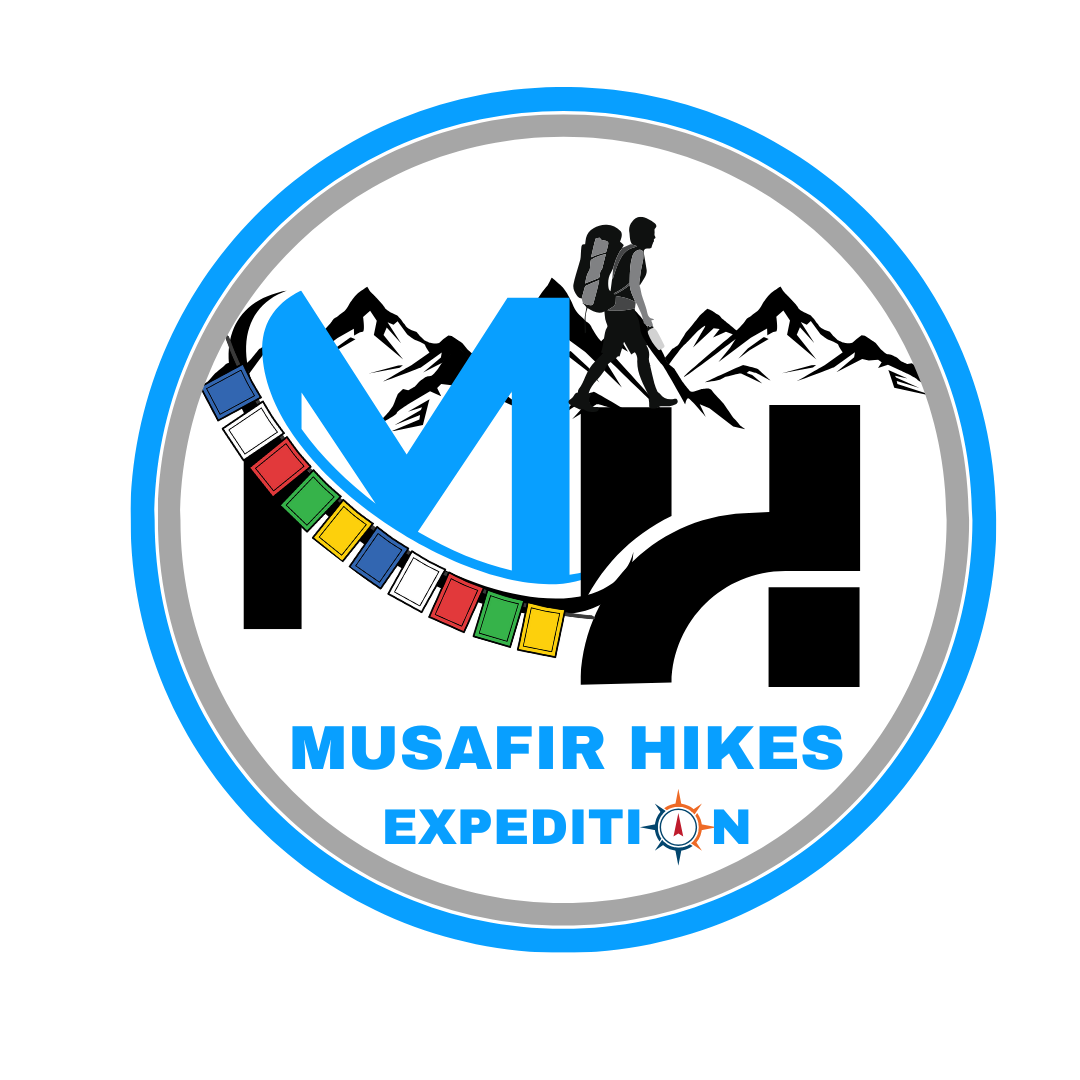Region
Uttrakhand | India
Duration
5 Days
Max. Altitude
12000 Ft.
Trekking Km.
23 KM
Grade
Easy To Moderate
Get in Touch with Our Trek Expert
- 91-9634395113
- info@musafirhikes.com
- Monday - Saturday: 10 AM to 06 PM
Rs.5,900 /Person
Fixed Departure Dates
Sept 2025
- 5% GST will be applicable on Trek Cost and Add-ons.
- Meeting Point( Pickup/ Drop Point ): ISBT Rishikesh, Railway Station Rishikesh,Tapovan Rishikesh.
- Reporting Time: 6:00 am
- Drop Time: 6:30 pm to 7:30 pm (Timings are subject to change based on weather and road conditions).
- Please reach Rishikesh a day before to avoid any delays.
Overview
Chopta has a quiet magical quality to it. Perhaps it’s the way that the meadows spread out like a soft, green carpet beneath the massive oak and deodar trees. Or how the early morning mist floats above the pines, making the whole valley feel like a dream you just woke into.
Tucked away in Uttarakhand’s Rudraprayag district, this small, unspoiled hamlet sits at an altitude of around 2,600–2,700 meters, surrounded by dense forests of rhododendron, oak, and deodar. Often called the “Mini Switzerland of India” it holds space for something vast — solitude, connection, and a pause from everything the world asks of us.
Continue Reading....
From here begins a walk not just through landscapes, but through time and belief — the trail to Tungnath, the highest Shiva temple in the world. Set at 3,680 meters, Tungnath is not only a wonder of altitude but of endurance — standing tall for over a thousand years, through snow, storm, and silence. Legend says that after the battle of Kurukshetra, the Pandavas came seeking Lord Shiva for forgiveness. But Shiva didn’t wish to meet them easily — so he took the form of a bull and disappeared into the Garhwal mountains. It’s believed that at Tungnath, his arms appeared from the earth — and that’s how this sacred temple became one of the Panch Kedar. Sages’ and shepherds’ centuries-long prayers still echo through the ancient stone temple, which is modest but incredibly powerful.
But the story doesn’t end there. About 1.5 km above Tungnath lies Chandrashila, the “Moon Rock” summit, sitting at roughly 4,000 meters. The climb is short but steep — often taken before sunrise, in silence, by torchlight and breath. According to local belief, this is where Lord Rama meditated after defeating Ravana. And even if you don’t come for the legend, you’ll stay for the view.
From the top, the world opens up. Nanda Devi, India’s highest peak, stands tall in the distance, flanked by Trishul, Nanda Ghunti, Dunagiri, and the majestic Chaukhamba, right in front. The sight of more than 40 snow-covered Himalayan peaks on clear days has moved seasoned trekkers to tears. If you’re lucky, you’ll catch the first golden light of sunrise spilling over the white ridgelines, touching one peak after another like a silent blessing.
This trail — Chopta to Tungnath to Chandrashila — is not the hardest trek you’ll do. But it may be the one you’ll remember longest. Because it’s not about how far or high you walk — it’s about what you feel along the way. The whisper of pine trees. The prayer flags fluttering in the wind. The temple bell ringing softly in the cold. At 13,000 feet, there is silence.
Who Can Participate
- Age Requirements:
- April to November: 9 years.
- December to March: 11 years.
- First-timers are welcome, though prior trekking experience is preferred. Good fitness is a must.
- Fitness Criteria:
- The Trekker should have sufficient stamina to cover 5 km of distance by jogging in 35 minutes without stress or 10 km of distance in 80 minutes without stress
- If the trekker prefers cycling he/ she should be able to cycle 10 km of distance in 30 minutes .
- Preparation Chart view download
- If the trekker wants to carry a backpack then he/she should be able to carry a 10-12 kg backpack. If opt Off-load option then the trekker should be able to carry a 3-5 kg backpack.
- If a trekker’s BMI is more or less than the normal range (18-29), please consult our Trek Coordinator before booking.
Tungnath-Chandrashilla Trek Itinerary
DAY 1
Rishikesh to Chopta
Distance: 200 km
Driving Time: 8–9 hours
DAY 2
Chopta to Tungnath and Chandrashila | Return to Chopta
Trek Distance: 10 km round trip
Altitude:
- Chopta: ~2,600–2,700 m
- Tungnath: 3,680 m
- Chandrashila: ~4,000 m
DAY 3
Chopta to Rishikesh
- Distance: 200 km
- Driving Time: 8–9 hours
Trip Ends: Arrival in Rishikesh by evening
Rishikesh to Chopta
Distance: 200 km
Driving Time: 8–9 hours
The journey begins early from Rishikesh, winding along the Ganga and Alaknanda rivers. As you drive deeper into the Garhwal Himalayas, you’ll pass through Devprayag and Rudraprayag — two of the five sacred confluences where rivers merge and legends linger in the air. The roads rise steadily, and by late afternoon, you reach Chopta — a quiet alpine meadow surrounded by dense forests of oak, rhododendron, and deodar.
Often called the “Mini Switzerland of India,” Chopta sits peacefully at around 2,600 meters.This is not just a base camp — it’s a place where many choose to just be. After settling in, you can take a short walk through the surrounding meadows or simply soak in the Himalayan stillness.
Chopta to Tungnath and Chandrashila | Return to Chopta
Trek Distance: 10 km round trip
Trek Time: 4–6 hours.
Difficulty Level: Moderate (well-defined path, gradual ascent).
Altitude:
- Chopta: 2,600–2,700 m
- Tungnath: 3,680 m
- Chandrashila: 4,000 m
With the first light of morning, you lace up your boots for a trek that’s short in distance but rich in experience. The trail from Chopta to Tungnath is well-paved and gradually ascends through rhododendron groves and open ridgelines. In spring, the forest bursts with blooming red and pink rhododendrons; in winter, the same trail becomes a snow-laced wonderland.
After about 3.5 km of trekking, you arrive at Tungnath , the highest Shiva temple in the world. It is more than just architecture and stone; it is a presence. Legends say this is where Lord Shiva’s arms appeared, as he hid in these mountains to escape the Pandavas after the war of Kurukshetra — part of the sacred story of the Panch Kedar temples.
From Tungnath, the trail climbs steeply for another 1.5 km toward Chandrashila, the “Moon Rock.” This final stretch is where the effort meets the reward. As you reach the summit at 3,690 meters, the entire Himalayan arc unfolds before you — a jaw-dropping 360-degree view of some of the tallest and most iconic peaks: Nanda Devi, Trishul, Chaukhamba, Kedarnath Dome, Dunagiri, Hathi Parvat, and more. If you are fortunate enough to be there at sunrise, you will be able to see golden rays brush across snowfields and summits. After spending time at the summit, you begin your descent back to Chopta, where warm food and a quiet mountain evening await.
Chopta to Rishikesh
Distance: 200 km
Driving Time: 8–9 hours
It’s time to bid farewell to Chopta’s meadows after enjoying a leisurely breakfast. One final look at the ridgelines and river valleys that have held you captive for the past two days can be had on the return drive, which follows the same winding Himalayan route. You arrive in Rishikesh at night with a fuller heart and a slightly slower pace—the kind of glow that only the mountains can provide.
Note: Read more about our Customize Tours Plan before booking your tour.
The Chopta Tungnath Trek, with the sacred extension to Chandrashila summit, is open almost year-round, but each season brings a very different flavor to the experience.
The Tungnath temple (3,680 m), the highest Shiva temple in the world, is open from May to October. Visiting during this period allows you to combine spirituality with the trek. Chandrashila summit, however, can be attempted year-round depending on snow and weather conditions. Depending on what you seek—snow adventure, alpine meadows, or clear Himalayan vistas—the best time for you may vary.
Spring (March to April): Blooming Meadows and Fresh Trails
As the snow melts and trails reopen, Chopta’s meadows come alive with rhododendrons, primulas, and other early blossoms. The weather is cool and refreshing, perfect for trekking without harsh conditions. Snow patches linger on higher sections near Tungnath, making the trails scenic and vibrant.
Highlights: Rhododendron bloom, fresh greenery, snow patches, pleasant trekking weather.
Best for: Nature lovers and photographers who want a mix of snow and flowers.
Summer (May to June): Clear Skies and Alpine Beauty
Summer offers stable weather and comfortable trekking conditions. The sky is usually crystal clear, offering panoramic views of Nanda Devi, Trishul, Chaukhamba, and Kedarnath peaks. The Tungnath temple opens for pilgrims in this season, making the trail culturally vibrant as well.
Highlights: Temple open, clear Himalayan views, lush alpine meadows.
Best for: Families, beginners, and those seeking both spirituality and nature.
Monsoon (July to September): Misty Trails and Lush Greenery
The meadows turn emerald green and the forests breathe with fresh life. Mist rolls over the trails, creating a mystical atmosphere. While flowers bloom along the way, trekkers must be cautious as trails can get slippery.
Highlights: Mist-covered valleys, fresh streams, lush meadows, quieter trails.
Best for: Adventurers and solitude seekers who don’t mind light rain and want raw Himalayan beauty.
Autumn (October to November): Golden Forests and Crystal Views
As the monsoon ends, the skies turn crisp and clear. Forests take on golden hues, meadows dry into soft alpine grasslands, and the views of snow-clad Himalayan peaks are at their sharpest. The weather is cool but stable, making it one of the most rewarding times to trek.
Highlights: Sharp mountain views, autumn colors, peaceful trails.
Best for: Photographers and trekkers who want the clearest views of the Garhwal Himalayas.
Winter (December to February): A Snow-Covered Wonderland
Chopta transforms into a snowy paradise, often called the “Mini Switzerland of India.” Tungnath temple and Chandrashila remain snowbound, and trekking becomes a winter adventure. The trek is moderately challenging in snow but absolutely stunning.
Highlights: Snow trekking, frozen landscapes, pristine silence.
Best for: Adventure seekers and those who want to experience snow trekking in the Himalayas.
Tungnath-Chandrashila Trek Map
Trek Guidelines
Health & Awareness
All participants must undergo a mandatory health check-up before the trek, as per Indian Mountaineering Foundation (IMF) safety norms.
Trekkers with chronic medical conditions (e.g., asthma, heart disease, epilepsy, diabetes, high blood pressure) must declare them during registration and carry prescribed medicines.
Basic first aid, oxygen cylinders, and a certified trek leader trained in Wilderness First Aid (WFA) will be present on all expeditions.
Trekkers must be aware of Altitude Mountain Sickness (AMS), its symptoms, and precautions. Guidelines will be explained during the briefing session.
Government Employees
As per Indian Government rules, employees availing leave for adventure activities must ensure proper leave sanction orders from their department before joining the trek.
Employees seeking reimbursement or recognition for adventure training must ensure the trek is recognized by the Indian Mountaineering Foundation (IMF) or Ministry of Youth Affairs & Sports.
A participation certificate will be provided after the trek, which can be submitted to concerned government departments for official use.
It is the participant’s responsibility to comply with their organization’s travel, safety, and insurance policies before joining.
Kids Guidelines
Children below 10 years are generally not recommended for high-altitude treks as per IMF advisory.
For family-friendly treks, children aged 10–15 years must be accompanied by a parent/guardian and require a fitness clearance certificate from a registered doctor.
Kids must be mentally prepared for long walks, uneven terrain, and basic camping conditions, as per outdoor safety norms.
Parents/guardians are solely responsible for their child’s safety, behavior, and adherence to trek rules.
Fitness Required
All trekkers must meet basic fitness standards set under Indian Mountaineering Foundation (IMF) and Ministry of Tourism guidelines.
Minimum fitness requirements:
Ability to walk 5 km in 45 minutes on plain terrain.
Ability to carry a 6–8 kg backpack for multiple hours.
No recent major surgeries or serious medical conditions in the past 6 months.
A medical fitness certificate (from an MBBS/MD doctor) is mandatory before joining high-altitude treks.
Alcohol, smoking, and drug use are strictly prohibited during the trek as per IMF and local administrative regulations.
What To Pack
Shoes and backpack
- Trekking shoes with ankle support
- Backpack with rain cover
Warm Layers and Clothes
- Warm layers – 3 layers if you’re trekking in spring, summer and monsoon (1 woollen sweater, 1 fleece, 1 padded jacket) – 4 layers if you’re trekking in autumn (1 woollen sweater, 2 fleece, 1 padded jacket) – 5 layers if you’re trekking in winter (1 pair of thermals, 1 woollen sweater, 2 fleece, 1 padded jacket)
- 3 Collared T-shirts (Wear one, carry two)
- 2 quick-dry trek pants (Wear one, carry one)
Continue Reading..
Accessories
- Sunglasses
- Sun cap
- Waterproof gloves
- Balaclava
- Woollen socks (2 pairs of Dry fit + 1 pair of Woollen)
- Headlamp
- Trekking pole
- Rain jacket + pants / poncho
Toiletries:
- Sunscreen
- Moisturiser
- Light towel
- Lip balm or vaseline
- Toilet paper
- Toothbrush
- Toothpaste
- Reusable plastic covers (for used clothes)
Cutlery:
- Steel lunch box, spoon and a Two water bottles or Hydration Pack
Basic Medical Kit (Carried by You)
While Musafir Hikes carries a larger medical kit, we recommend bringing personal medicines:
- Diamox (for AMS) – only after doctor consultation
- Paracetamol, Combiflam
- Avomine (for motion sickness)
- ORS or Electrolyte Sachets
- Band-aids, Antiseptic Cream
- Muscle Spray or Pain Relief Balm
- Any prescribed medication
Documents & Personal Items
- Government ID (Aadhar/Passport) – Mandatory for forest permits
- Photocopies of ID – At least 2
- Passport-size Photos – 2–4 (for permits)
- Cash – ATMs may not work beyond Joshimath; keep ₹2,000–₹3,000 for local expenses
- Small Notepad + Pen – For journaling or information
Pro Tips
- Pack light but don’t skip essentials. Every extra kilo will feel heavier at 3,500 m.
- Avoid plastic bags. Use dry bags or zip-locks to keep items dry and organized.
Check weather forecasts a day before your trip and adjust accordingly.
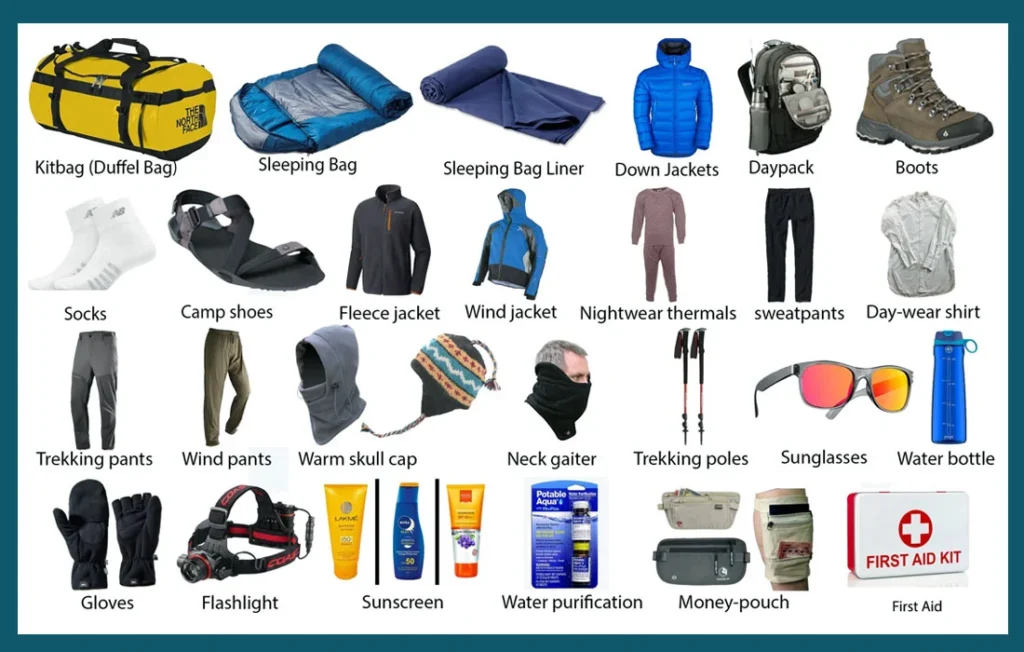
How To Reach
Pick-Up Information
- It is essential for everyone to arrive at Rishikesh (06:00 am)
- Pick-up Location – ISBT Rishikesh,Railway Station Rishikesh,Tapovan Rishikesh.
- Once you have reached Rishikesh, MHE will manage the rest of your travel arrangements, if you have opted for pick-up service, you can select this option during the booking process by adding it as an add-on.
Options to Reach Rishikesh
First, you can arrive at Delhi, Dehradun airport or Chandigarh. The journey from these locations to Rishikesh is explained below.
1. Take overnight train/bus to Rishikesh.
2. Take overnight train/bus to Haridwar and drive to Rishikesh (25km | 35 min drive with normal traffic).
3. Take overnight train/bus to Dehradun and drive to Rishikesh (50km | 1hr 20min drive with normal traffic).
4. Board a flight to Dehradun airport (Jolly Grant Airport) (21 km, 30 min). If you’re arriving by air, then come one day in advance.
Drop-Off Information
- The designated drop-off point is same as pickup point.
- Reach in Rishikesh by 6:30 to 7:30 pm.
- Please consider planning your subsequent travel arrangements after 10:00 pm.
Note – In July and August month always have a buffer day in your Itinerary due to the Monsoon.
- It’s highly advisable to keep a buffer day in your travel plan. If the buffer day is not used, it can be used to explore Rishikesh.
- MHE offers comfortable transportation through Tempo Traveler, Bolero, or equivalent vehicles. If you wish to upgrade your mode of transportation, please contact your trek coordinator for further assistance.
Cost Terms
✅Inclusion
Accommodation (as per the itinerary):
- Triple/quad sharing (separate for males and females throughout the trek)
Meals (Veg + Egg):
- All meals (including tea, soup, snacks, etc.) from Day 1 Dinner to Day 3 Breakfast. Morning and evening tea, accompanied by light snacks, are included in the Tungnath-Chandrashilla trekking package.
3. Support:
- 1 Versatile base camp manager handles communication and deploys extra manpower in emergencies.
- 1 Mountaineering & First aid qualified professional trek Leader.
- 1 Experienced high-altitude chef.
- Local experienced guides (Number of guides depending on the group size).
- Enough support staff.
Trek equipment:
- Sleeping bag, Sleeping liners (if required), mattresses, and Utensils.
- 3 men all season trekker tent (twin sharing), Kitchen & Dining tent, Toilet tent.
- Camping stool, Walkie talkie.
- Ropes, Helmet, Ice axe, Harness, Gaiters & crampons (if required).
5. First aid:
- Medical kit,Stretcher,Oxygen cylinder,Blood pressure monitor,Oximeter,Stethoscope.
6. Transportation (as per the itinerary). Mules/porters to carry the central luggage.
- Cloakroom facility available at the base camp for additional luggage
- All necessary permits and entry fees, Upto the amount charged for Indian
- Trek Completion Certificate.
❌Exclusion
- Insurance (Mandatory).
- Food during the transit.
- Any kind of personal expenses.
- Mule or porter to carry personal luggage.
- Emergency evacuation, hospitalization charge, etc.
- Anything not specifically mentioned under the head Inclusion.
Things can be provided on demand and availability (participant has to pay extra for these things).
- Satellite phone/set phone – is a type of mobile phone that connects via radio links via satellites orbiting the Earth instead of terrestrial cell sites like cellphones. Therefore, they can operate in most geographic locations on the Earth’s surface.
- Gamow/PAC HAPO Bag(Portable Hyperbaric Bag) – is a unique, portable hyperbaric chamber for the treatment of acute mountain sickness (AMS), also known as altitude sickness.
- AEDs (Automated External Defibrillators) are portable life-saving devices designed to treat people experiencing sudden cardiac arrest, a medical condition in which the heart stops beating suddenly and unexpectedly.
Cancellation & Rescheduling Policy
We understand that plans can change. Our policies are simple, transparent, and designed to balance your flexibility with the commitments we make to our local teams.
 Cancellation Policy
Cancellation Policy
- Cancellation requests must be made in writing via email (info@musafirhikes.com)
- The date of cancellation is the date we receive your request, not when it is sent.
Refunds
- 30+ days before trek → Full refund (minus 1.99% processing fee)
- 15–29 days before trek → 80% refund
- 10–14 days before trek → 60% refund
- 5–9 days before trek → 40% refund
- ≤4 days before trek → No refund
Rescheduling Policy
- Requests must also be made in writing (e.g., via email).
- The date of receipt determines rescheduling eligibility.
Rescheduling Fees
- 30+ days before trek → Free reschedule
- 15–29 days before trek → 10% fee
- 10–14 days before trek → 20% fee
- 5–9 days before trek → 30% fee
- ≤4 days before trek → Not possible
Notes
- Refunds are processed within 7–10 business days to the original payment method.
- Timelines are counted from the original trek start date.
- If a trek is affected by weather, natural events, or government restrictions, we will try to reschedule first. If not possible, the cancellation terms above apply.
- Bookings are non-transferable.
- Once rescheduled, treks become non-refundable.
Trek Essentials
Gallery
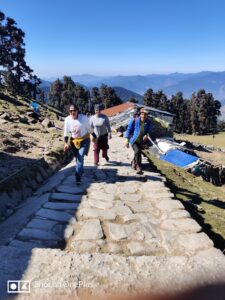
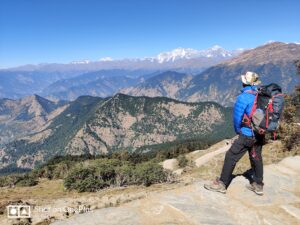
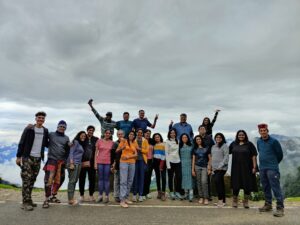
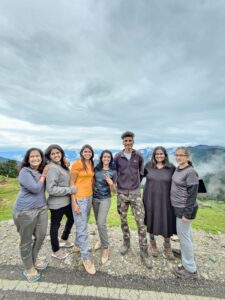
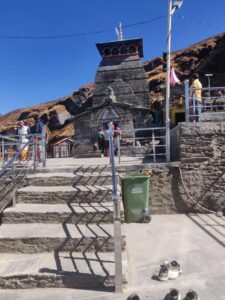
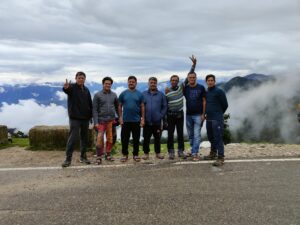
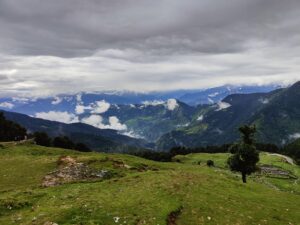
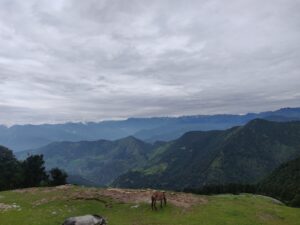
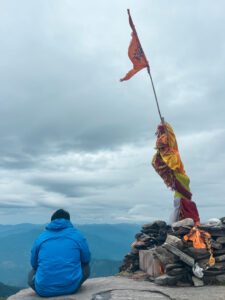
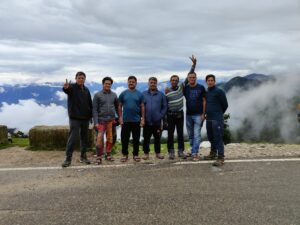
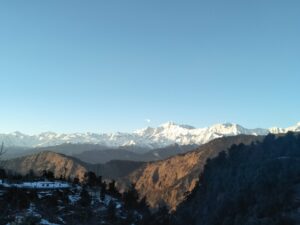
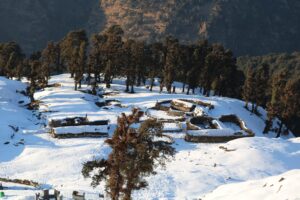
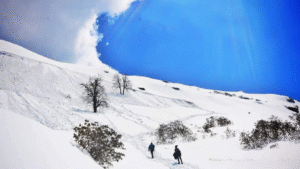
Trek Reviews




Frequently Asked Questions(FAQ)
What is the base camp of this trek?
The base camp for the Chopta Tungnath trek is Chopta, a picturesque hamlet in Uttarakhand, also known as the “Mini Switzerland of India.”
How do I reach the base camp (Chopta)?
Pickup will be arranged from Dehradun/Haridwar/ Rishikesh (exact point will be shared before departure).
From Haridwar, the drive to Chopta is around 7–8 hours (200 km).
Where will we stay during the trek?
- Chopta: Guesthouse/camps
- Trekking days: Tented accommodations or lodge-style stays depending on weather
How many people share a tent?
Tents are provided on a twin-sharing basis, with the option for triple occupancy if required.
What type of food will be served?
Nutritious vegetarian meals – including breakfast, lunch, evening snacks, and dinner – will be served.
What is the best time for the Chopta Tungnath trek?
- Summer (April – June): Pleasant weather, clear views of the Himalayas, and blooming meadows.
- Winter (December – February): Snow trek experience with a chance to see Tungnath temple surrounded by snow.
When can I expect snow?
Snow is usually present from late December to early March.
What if it rains during the trek?
The trek operates in all seasons. Tents are waterproof, and ponchos/raincoats are recommended for trekking in rain.
Where is the last ATM point, and what about network connectivity?
- Last ATM: Ukhimath or Rudraprayag
- Network: BSNL and Jio work in some stretches; Chopta has limited connectivity.
Are washroom facilities available during the trek?
Yes. Guesthouses at Chopta have basic washrooms. During camping, toilet tents (dry pits) will be provided separately for men and women.
Do I need permits for the trek?
Yes, forest entry fees/permits are required for the Chopta Tungnath region. These are included in your trek package and arranged by Musafir Hikes.
How do I book a tour with Musafir Hikes?
You can book directly through our website or contact us via call/WhatsApp/email. Once you select your tour, you’ll receive a confirmation and payment details.
What is included in the tour cost?
Our tours generally include accommodation, meals (as per itinerary), guide charges, permits, and basic medical support. Exclusions usually cover personal expenses, travel insurance, and anything not mentioned in inclusions.
Is it safe to travel with Musafir Hikes?
Yes. Your safety is our top priority. We follow government trekking norms, carry first aid, and our guides are trained in mountain safety and emergency handling.
How difficult is the trek/tour? Do I need prior experience?
Difficulty varies from tour to tour. Most treks are designed for beginners with good fitness, while some require prior high-altitude experience. Fitness preparation tips are always shared after booking.
How do I prepare physically for the trek?
We recommend regular walking/jogging, stair climbing, or light cardio at least 3–4 weeks before the trek. Staying hydrated and building stamina will make your experience much easier and enjoyable.
How do I reach the starting point of the trek?
We provide details of the nearest railway station/airport and assist with travel planning. Transport from pickup points (like Rishikesh/Dehradun) is usually arranged with the group
Why should I choose Musafir Hikes?
We focus on safety, sustainability, and local community support. A part of your booking helps uplift Himalayan villages, making your journey meaningful.
